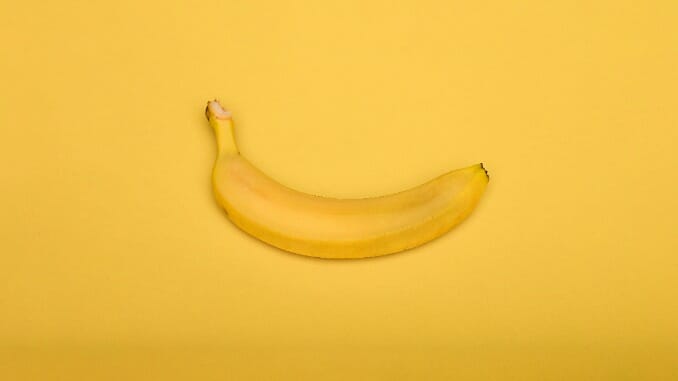My Foray into The Weird World of Mid-2010s Raw Vegan YouTube
Photo by Deon Black/Unsplash Food Features diet
Like every Millennial woman raised on low-rise jeans and SlimFasts for breakfast, I have struggled with disordered eating. But unlike many of the beautiful, multitalented women I know who can boast a wide variety of interests, eating has always been my main and favorite hobby. This left me in a conundrum, as every time I wanted to lose weight, I was disturbed at the prospect of cutting out the one thing in life that has always provided me with a reliable source of joy: eating as much as I want.
So it’s no surprise that I, like so many others, fell victim to the bizarre raw vegan craze that took over the internet in the mid-2010s. This diet (which was billed as definitely not a diet) involved eating massive quantities of raw plant food. Carbs were fine as long as they were consumed in the form of bunches of bananas or raw carrots, but fat of any sort was a no-go (though the occasional avocado—my favorite —was allowed). Proponents of this diet claimed that if you ate this way, you could eat as much as you wanted to without gaining weight. Perfect! A disordered eater’s dream come true.
My introduction into the world of raw veganism began with the YouTuber FullyRawKristina, who, looking back, made some highly dubious health claims from the beginning, one of which being that her eyes changed color from eating only raw fruits and vegetables. Despite knowing that this claim was almost definitely bullshit, I still bought into the aesthetic of her massive, brightly colored salads and smoothies packed with enough sugar to turn anyone into a diabetic. She wasn’t just selling a diet but rather selling a “healthy” lifestyle that involved eating mass quantities of watermelon and exploring tropical locales, a supposedly “cleaner” iteration of the digital nomad craze of the era.
FullyRawKristina was certainly selling a toxic lifestyle, but by far the worst figure in the raw vegan YouTube sphere was Freelee the BananaGirl, who famously advocated for eating 30 bananas a day. Her Raw Till 4 diet graciously included potatoes and sometimes even pasta (inexplicably only eaten after 4 p.m., though), but her videos recording her eating habits often also included intense weight-shaming and downright bullying. Often, a corner of the video would be dedicated to a video of Freelee doing squats, insinuating that I, the viewer, should also be getting off my ass and doing something with my life to “get fit,” i.e., to get skinny.
Freelee and other content creators like her flocked to Chiang Mai, Thailand, a digital nomad hub, in the mid-2010s to eat fruit, go on daily intense bike rides and broadcast their insufferable, largely uneducated views on diet to their audience of impressionable teenagers and young adult viewers, mostly women, who began copying their unsustainable and, frankly, unenjoyable diets in the attempt to achieve an aspirational lifestyle. Many of these influencers claimed that eating this way was how they healed their eating disorders, but at least for me, these super-strict rules around what was “clean” or not were damaging and distorting.
Of course, not every vegan YouTuber of this period went to the extremes of Freelee or Kristina, but eating a vegan diet high in carbs and low in fat was a common thread that tied many of these influencers together. But by 2019, this particular corner of the vegan YouTube community began to crumble. Popular influencers Stella Rae, Bonny Rebecca and Yovana Mendoza started incorporating animal products into their diets again, likely because their high-carb, low-fat vegan diets were incredibly difficult to maintain. They faced intense online backlash, with critics calling their ethics into question. But I wonder how much ethics had to do with it in the first place; from my point of view, it seemed like aesthetics were, in fact, the focus. I can’t help but think a movement more grounded in ethics may have had a different outcome—though it may not have been quite as appealing if wealthy, thin white women weren’t promoting it.
I was never very successful at maintaining a raw vegan diet or anything close to it. There are only so many times you can wrap a date in a lettuce leaf or consume a ten-banana smoothie in one sitting before you realize that eating this way takes a lot of joy out of life. That’s not to mention the extreme bloating and even weight gain that many adherents of this kind of diet have suffered from. Overall, for me, it just didn’t seem worth it. Though I remained vegan for several years, I learned that eating olive oil or a Beyond Burger wasn’t going to destroy my health.
I wish I could say that I learned important lessons about body acceptance and fad dieting throughout this experience, but like most women, food and diet is something I think I’ll always grapple with. What I did learn is that I will never again attempt to convince myself that an oil-free raw vegan lasagna is as good as the real thing, and I’ll never again deprive myself of the latter. I guess that’s growth.